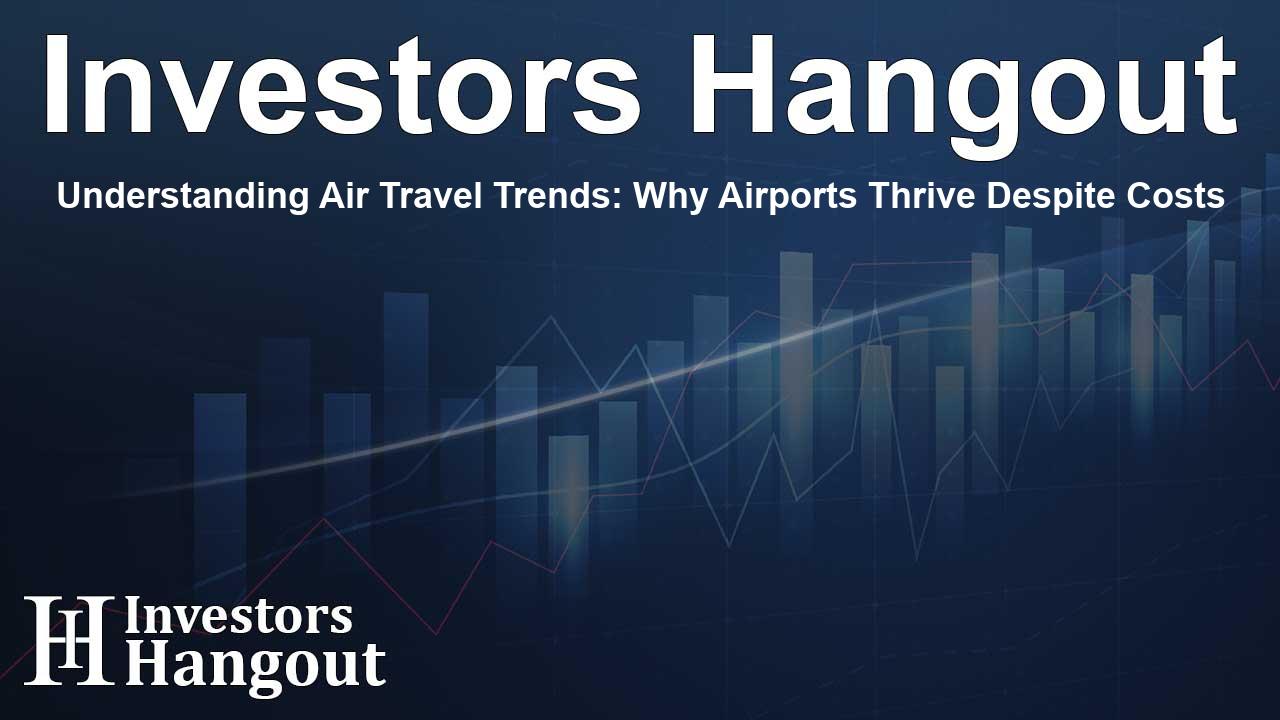Understanding Air Travel Trends: Why Airports Thrive Despite Costs

Understanding Air Travel Trends: Why Airports Thrive Despite Costs
In a world where travel can often seem daunting due to overcrowded airports, rising prices, and lingering uncertainties, it’s fascinating to see how North American airports maintain their attractiveness for millions of passengers each day. Recently, the J.D. Power Airport Satisfaction Study provided compelling insights into this phenomenon, revealing a robust appetite for travel within the region.
Record-Breaking Passenger Volumes
On a bustling day, over three million passengers traversed through Transportation Safety Administration checkpoints, signaling a strong resurgence in air travel. This impressive statistic illuminates the resilient nature of air transportation demand, as recorded in the J.D. Power 2024 North America Airport Satisfaction Study.
Passenger Satisfaction Amidst Challenges
Remarkably, despite facing the challenges of significant passenger volumes and an uptick in travel-related expenses, satisfaction levels remain high among travelers. According to the study, about 60% of passengers expressed that they either “somewhat agree” or “strongly agree” that they enjoyed their time spent at the airport. This sense of satisfaction persists even while other indicators, such as the rising costs of food and beverage, present a complex scenario.
The Impact of Rising Costs
However, the pressure of rising costs cannot be overlooked. The report highlights concerns regarding the affordability of food and drink within airports, traditionally a significant complaint among travelers. Passengers reported spending an average of $3.53 less on refreshments this year than in the previous year. Particularly in larger airports, the decline was even steeper, with an average reduction of $6.31 per person.
Unique Airport Identities Enhance Experiences
One notable aspect highlighted in the study is the effort made by airports to establish distinct regional identities. About 70% of passengers feel their airport captures the essence of its location, enhancing their overall experience. This effort to reflect local culture and identity through design, signage, and amenities helps build a more engaging environment for travelers.
Crowd Density and Satisfaction
The study also illustrated how crowding can dramatically affect passenger satisfaction ratings. Airports perceived as “not at all crowded” achieved an overall satisfaction score of 736 out of 1,000. In contrast, when airports were experienced as “severely crowded,” satisfaction scores dropped significantly to mere 429. Nonetheless, only 5% of passengers reported encountering severely crowded conditions in 2024, indicating that many airports are managing congestion effectively.
In terms of concrete rankings from the study, Minneapolis-Saint Paul International Airport leads the pack among mega airports with a score of 671, followed closely by Detroit Metropolitan Wayne County Airport and Phoenix Sky Harbor International Airport. Meanwhile, John Wayne Airport in Orange County tops the satisfaction charts for large airports, with Tampa International Airport and Kansas City International Airport following closely.
Indianapolis International Airport has solidified its reputation as a top performer in the medium airport category, achieving a score of 687.
About the J.D. Power Study
Conducted over a comprehensive sample of more than 26,000 surveys from U.S. and Canadian passengers traveling in the last 30 days, the J.D. Power 2024 North America Airport Satisfaction Study covers various aspects of the airport experience. The study evaluates factors from ease of travel and terminal facilities to the conduct of airport staff and retail offerings.
In summary, the latest findings from J.D. Power reveal a paradoxical but uplifting picture for North American airports. Despite overcrowded terminals and rising operational costs, the focus on enhancing passenger experience, providing a unique sense of place, and maintaining reasonable crowd levels provides a foundation for continued satisfaction amid challenges.
Frequently Asked Questions
What did the J.D. Power study reveal about passenger satisfaction?
The study indicated that 60% of passengers felt they enjoyed their time at the airport, despite rising costs and high volume traffic.
How did spending change for passengers this year?
Passengers reported spending an average of $3.53 less on food and drink compared to the previous year, showing a decline in spending habits.
Which airport ranked highest for passenger satisfaction?
Minneapolis-Saint Paul International Airport ranked highest among mega airports, while John Wayne Airport led the large airport category.
What is the significance of airport identity in passenger satisfaction?
About 70% of passengers agreed that their airport reflected the local culture and identity, which contributed positively to their overall experience.
How does crowd density impact passenger experience?
Airports perceived as less crowded received significantly higher satisfaction scores compared to those deemed severely crowded, although few passengers reported overcrowding.
About Investors Hangout
Investors Hangout is a leading online stock forum for financial discussion and learning, offering a wide range of free tools and resources. It draws in traders of all levels, who exchange market knowledge, investigate trading tactics, and keep an eye on industry developments in real time. Featuring financial articles, stock message boards, quotes, charts, company profiles, and live news updates. Through cooperative learning and a wealth of informational resources, it helps users from novices creating their first portfolios to experts honing their techniques. Join Investors Hangout today: https://investorshangout.com/
Disclaimer: The content of this article is solely for general informational purposes only; it does not represent legal, financial, or investment advice. Investors Hangout does not offer financial advice; the author is not a licensed financial advisor. Consult a qualified advisor before making any financial or investment decisions based on this article. The author's interpretation of publicly available data shapes the opinions presented here; as a result, they should not be taken as advice to purchase, sell, or hold any securities mentioned or any other investments. The author does not guarantee the accuracy, completeness, or timeliness of any material, providing it "as is." Information and market conditions may change; past performance is not indicative of future outcomes. If any of the material offered here is inaccurate, please contact us for corrections.